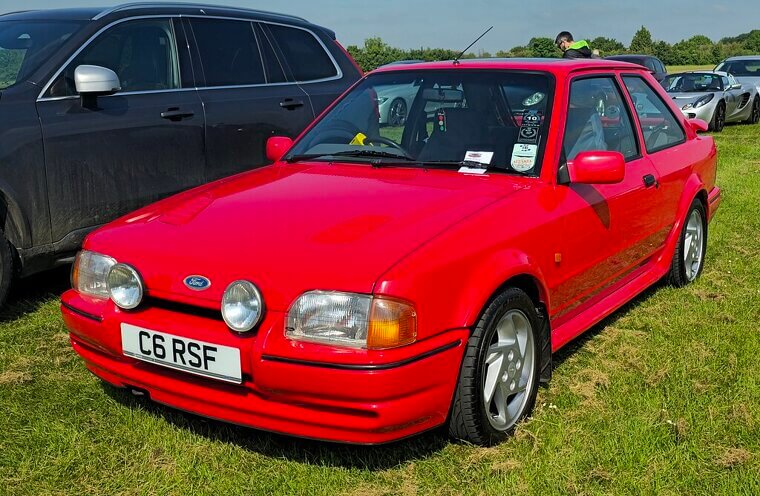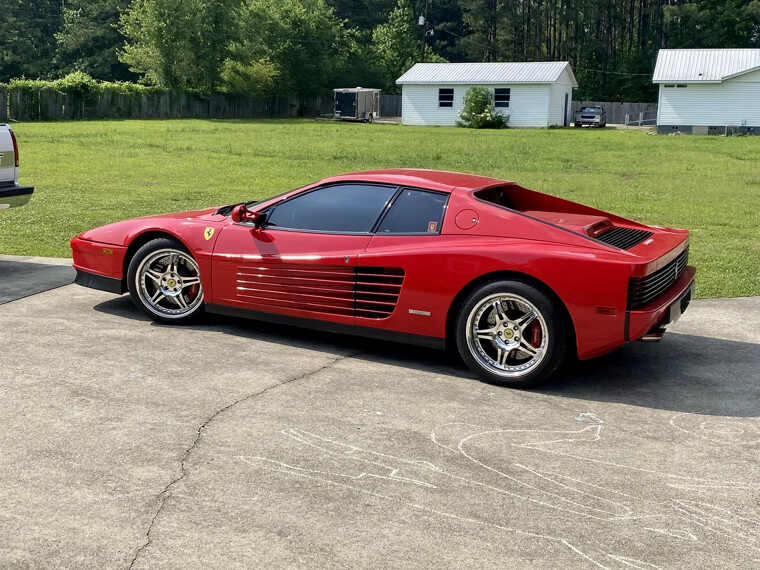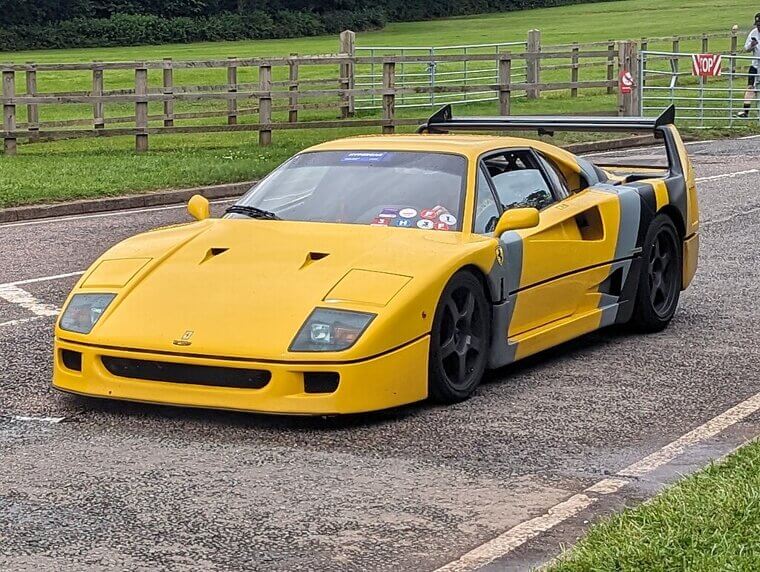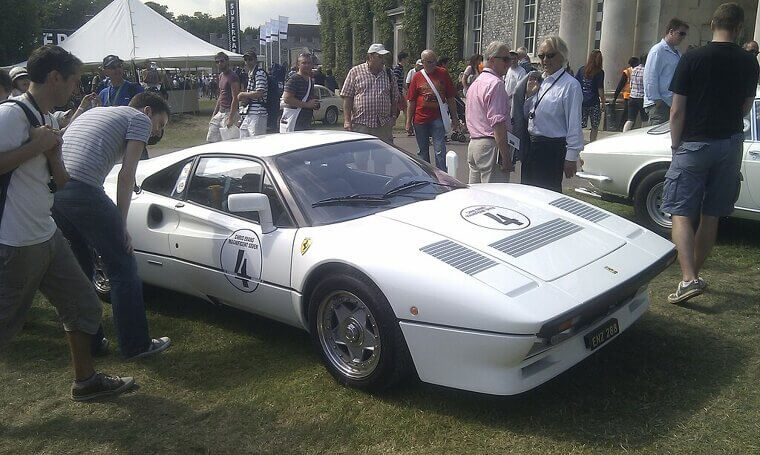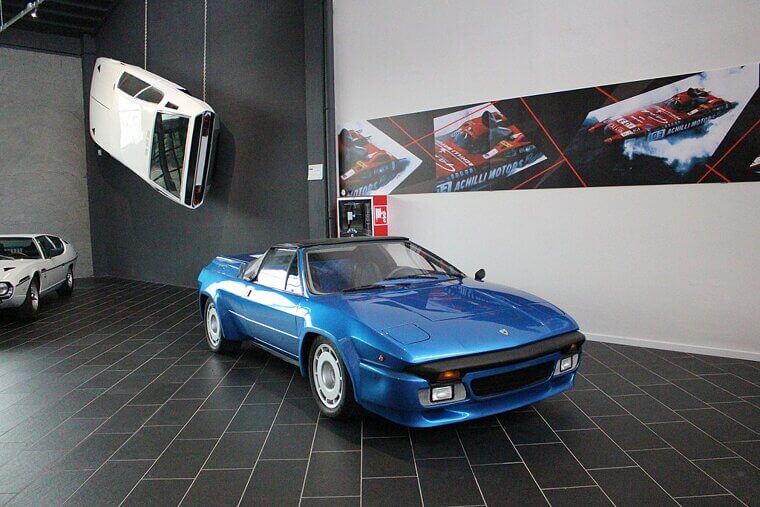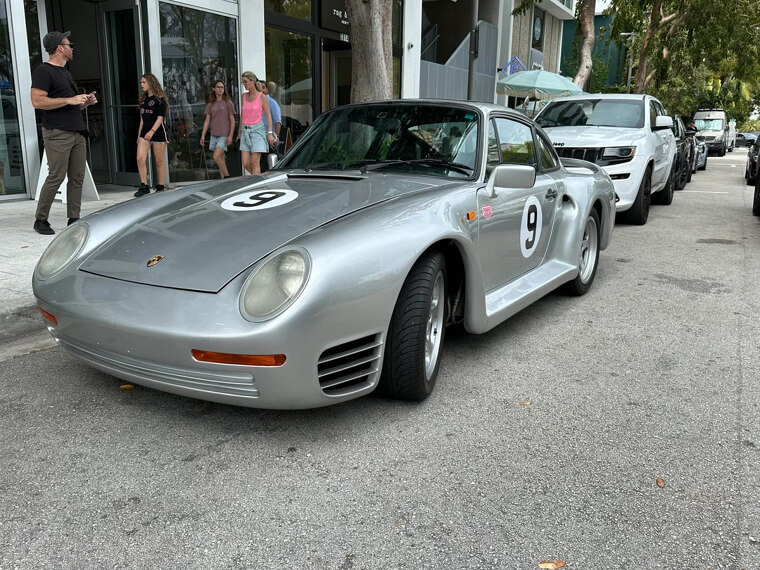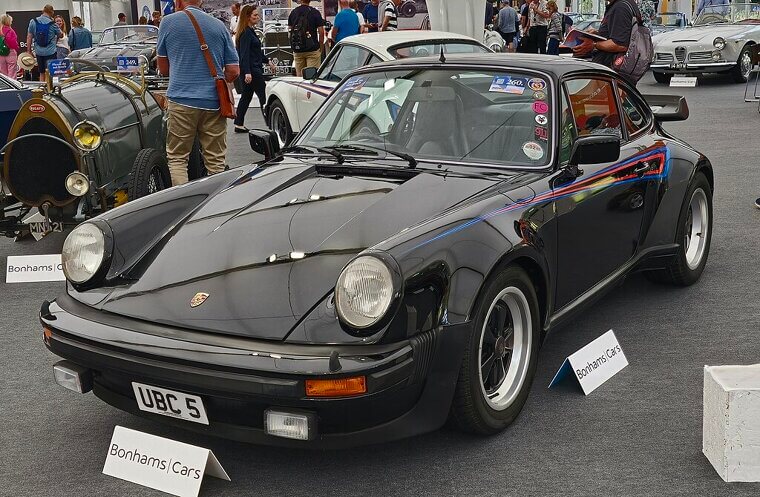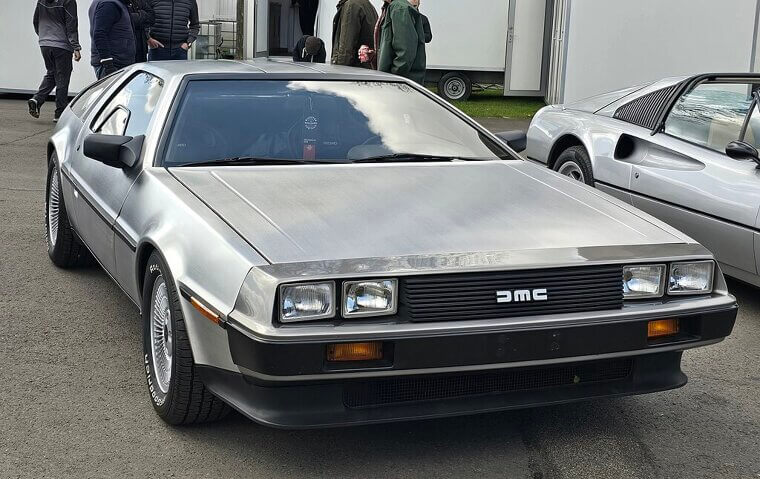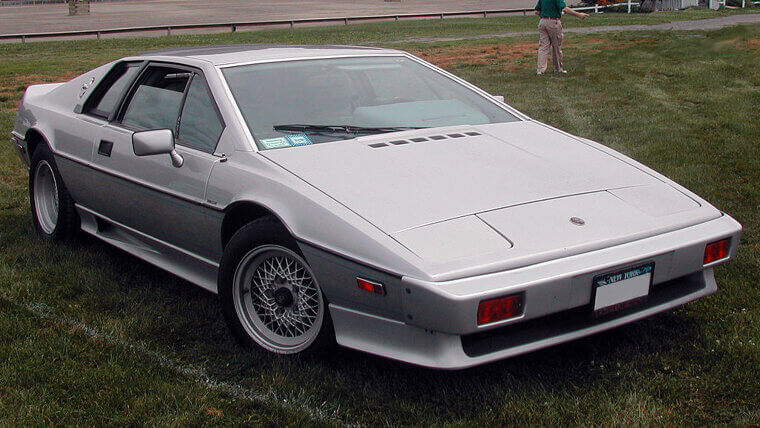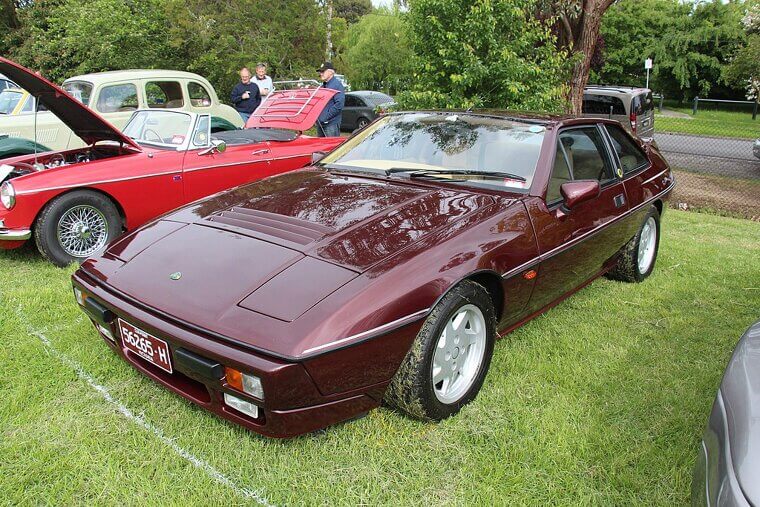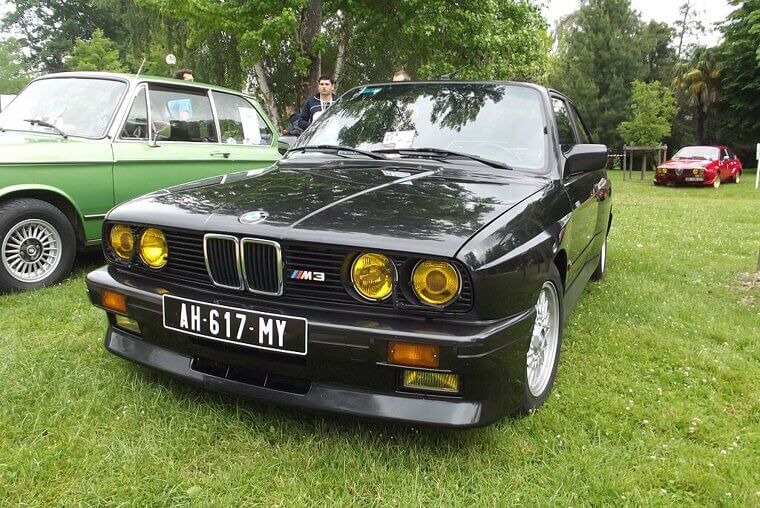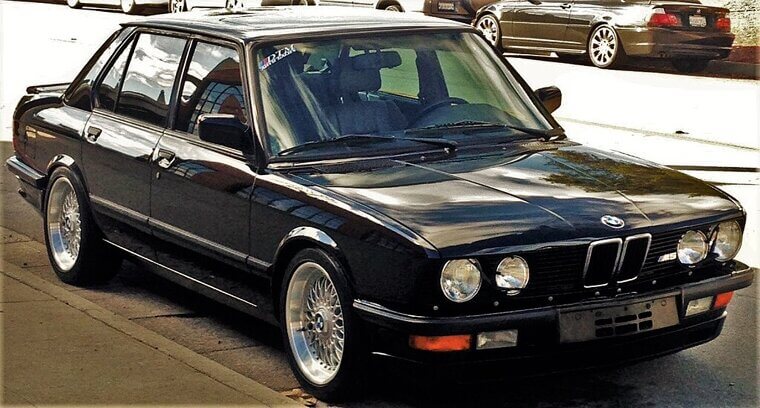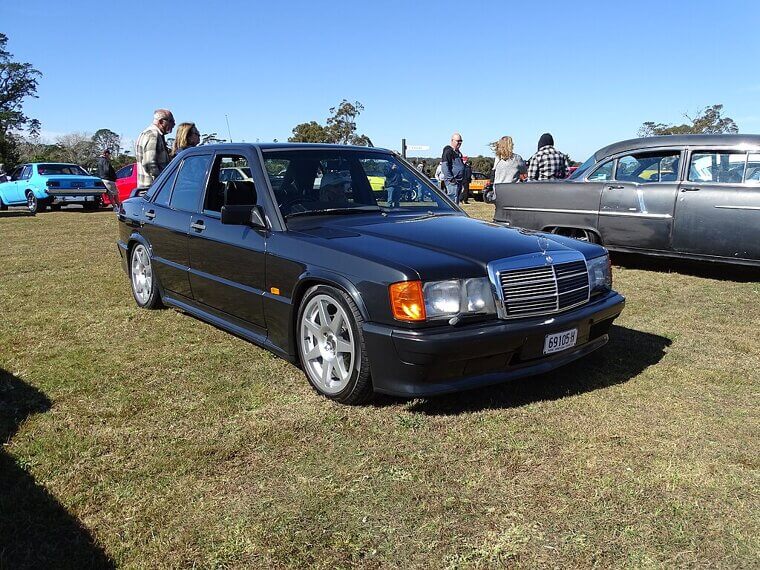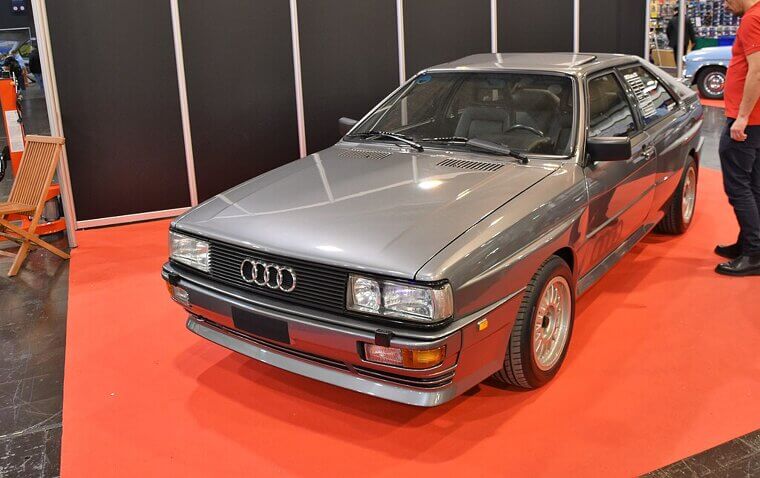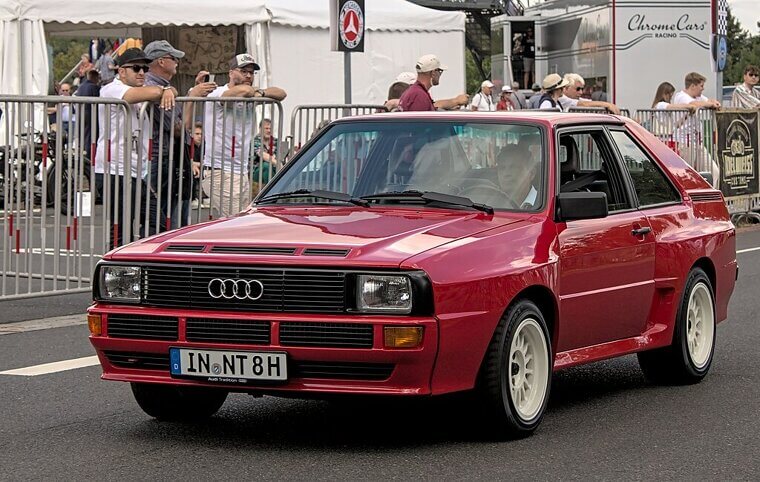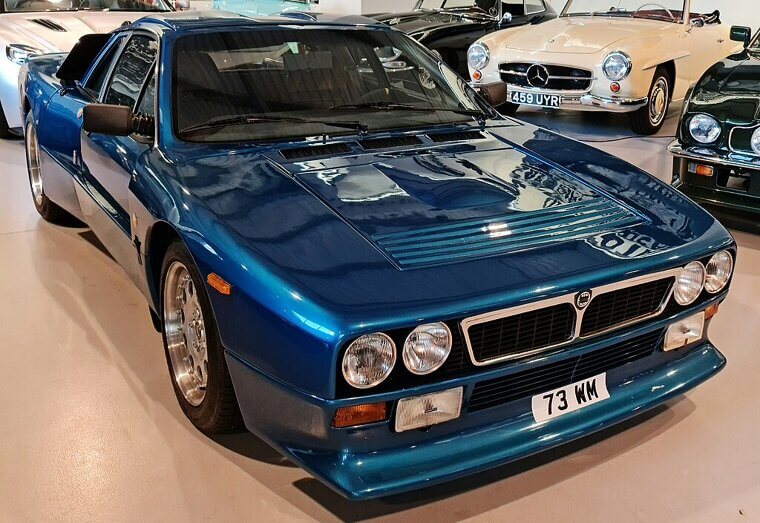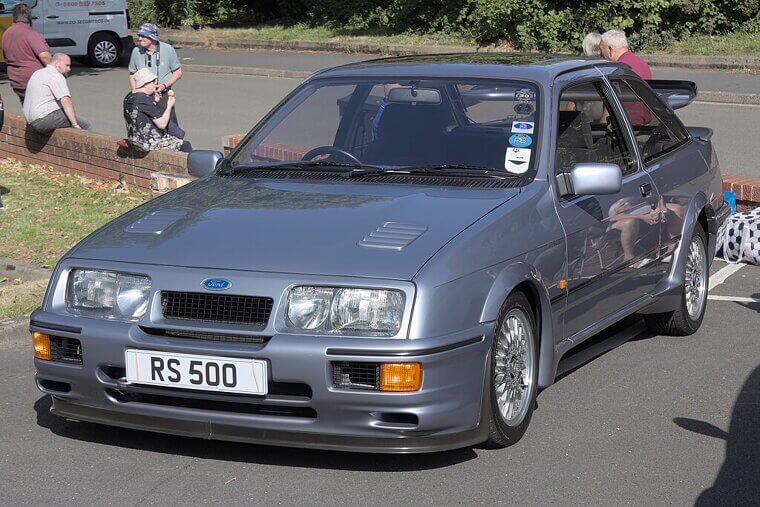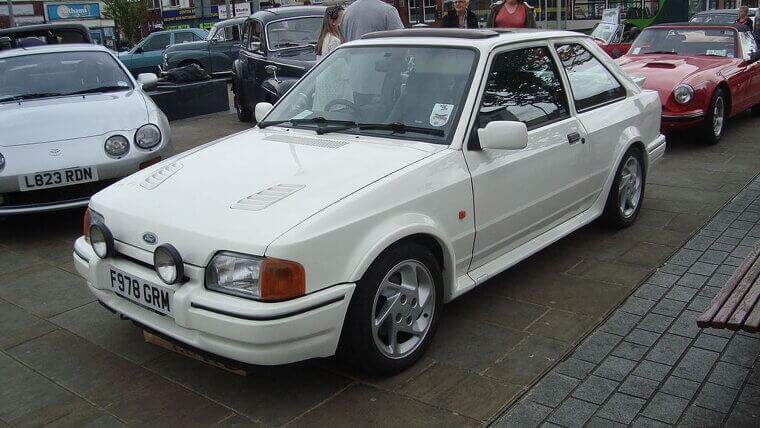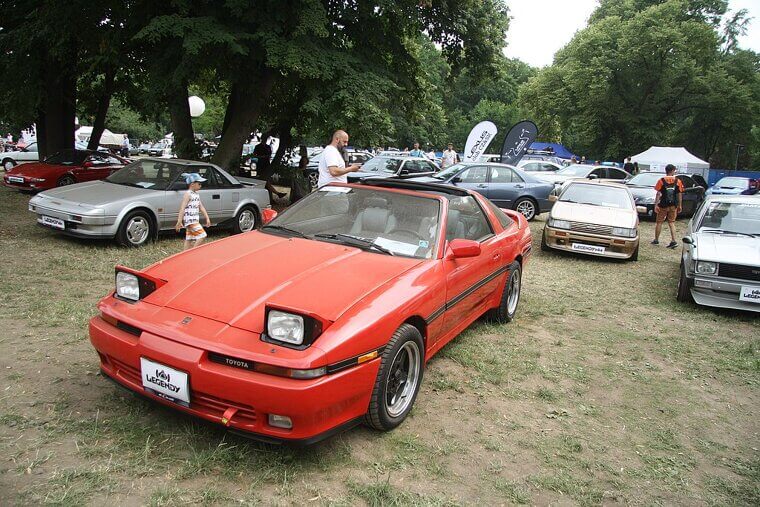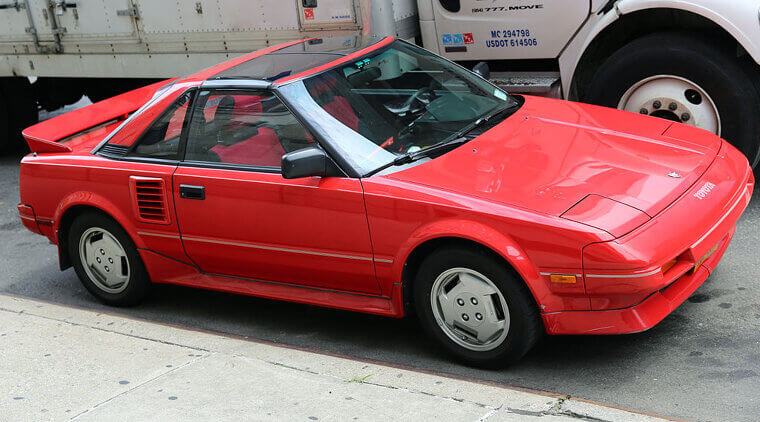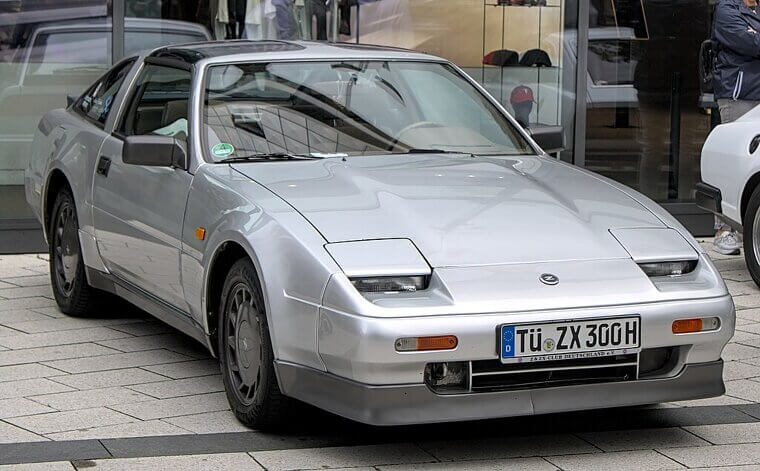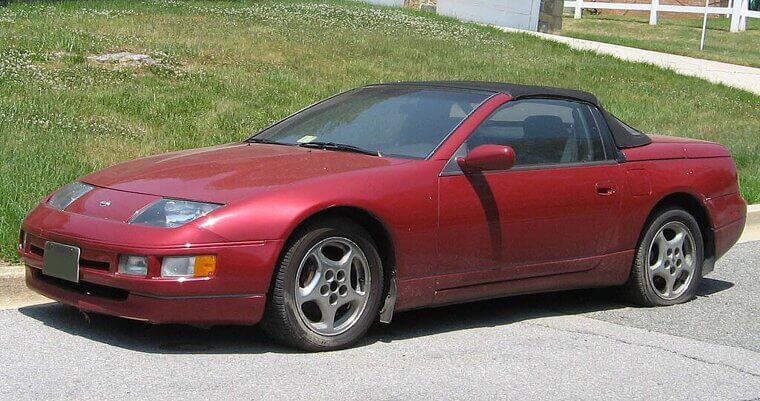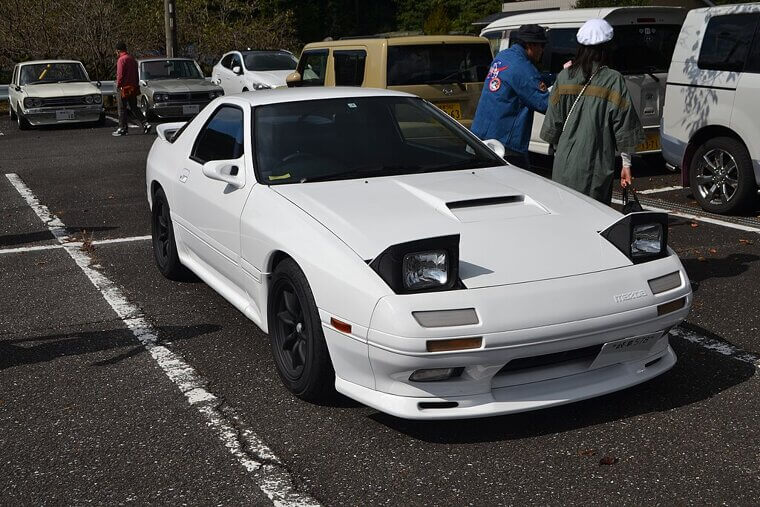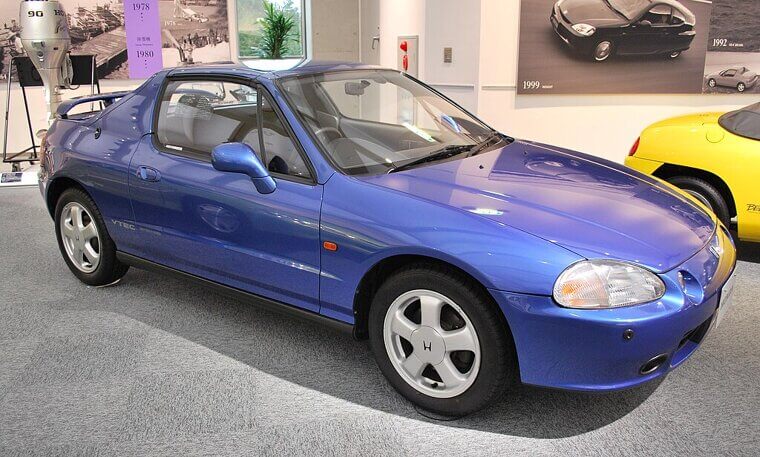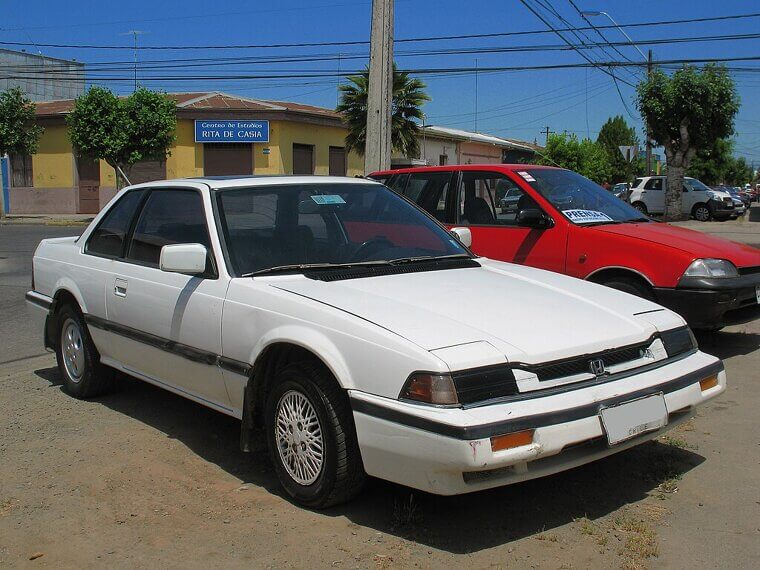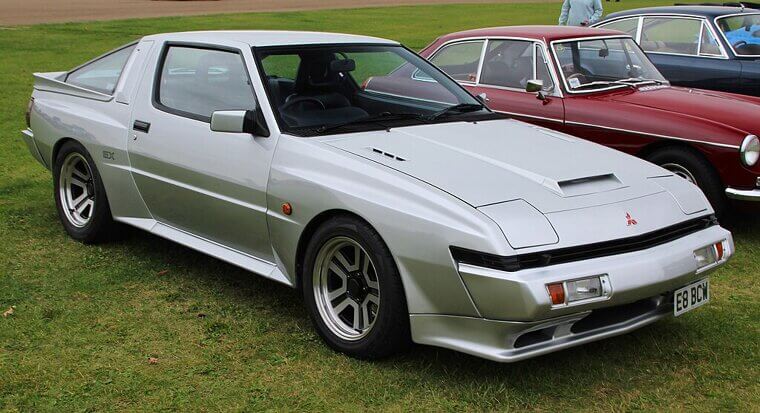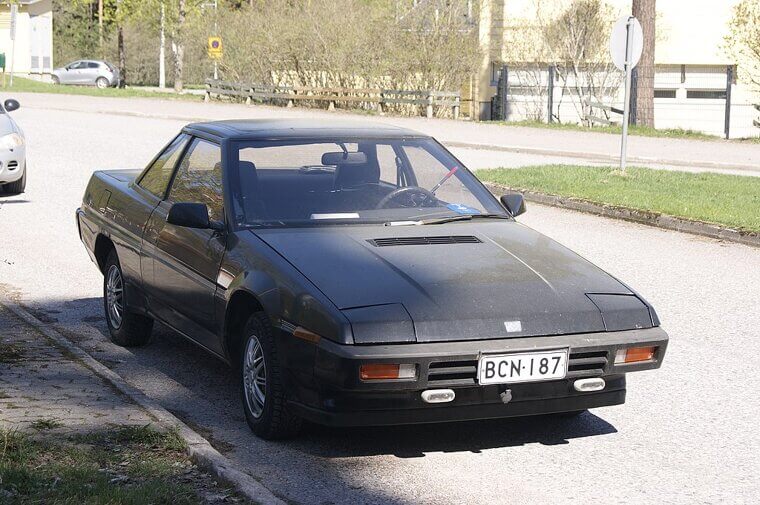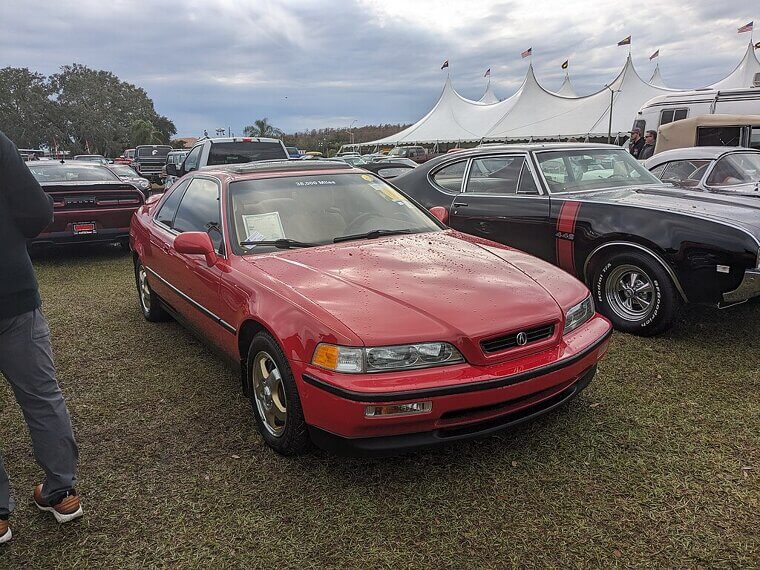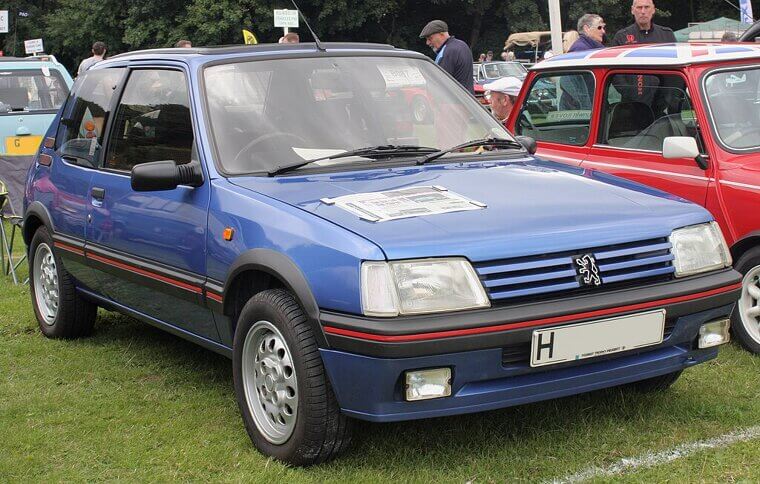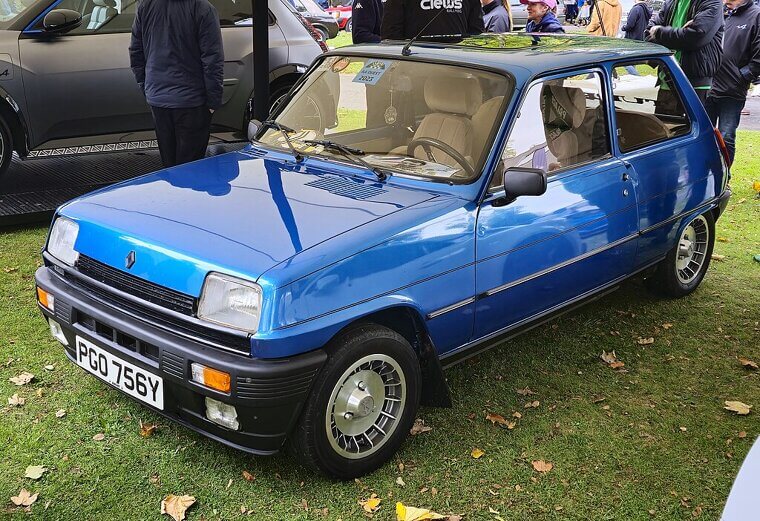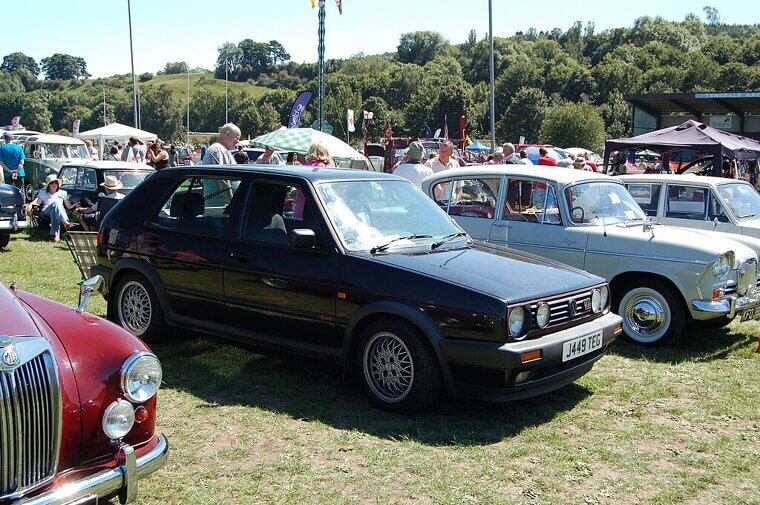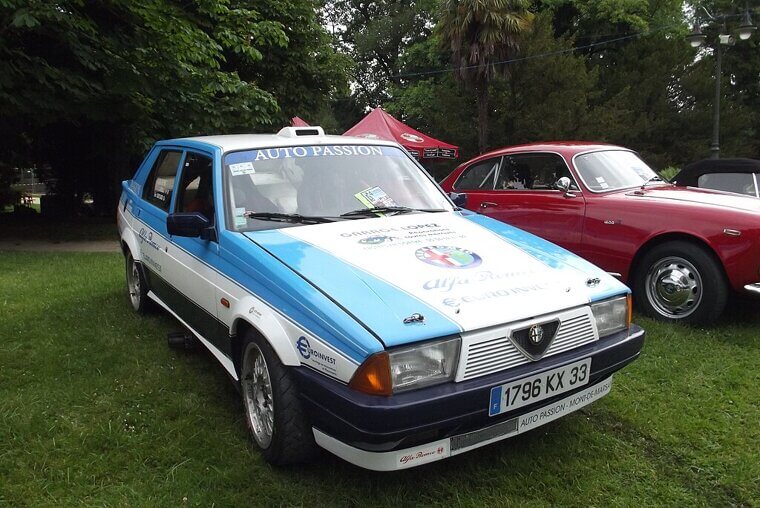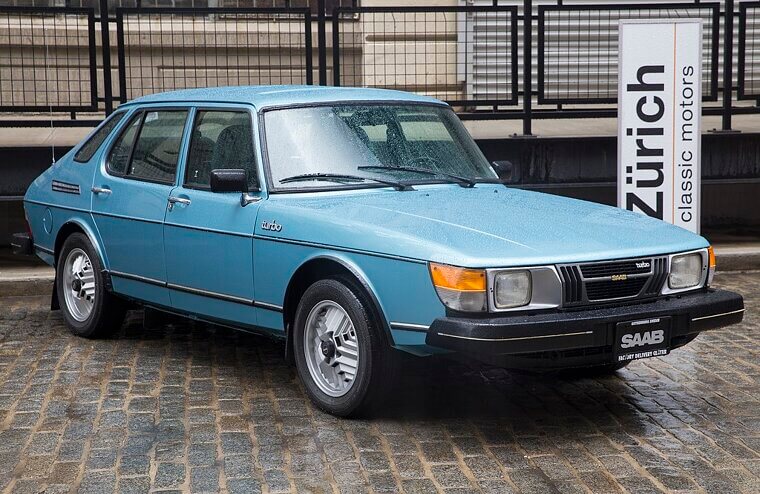The Cars That Turned Heads in the 1980s
The 1980s were a neon-drenched playground where excess was celebrated, and cars followed suit. This was the decade where turbo badges reigned supreme and everyone had a dream machine pinned on their bedroom wall (even if they really drove a beige hatchback).
Ferrari Testarossa (1984–1991)
The Ferrari Testarossa was the bedroom wall poster of the ’80s, its wide stance and iconic side strakes screaming excess. Powered by a flat-12 engine with over 380 horsepower, it combined speed with a look that Miami Vice made immortal. Owning one said you were bold and rich!
Ferrari F40 (1987–1992)
Ferrari’s final car signed off by Enzo himself, the F40 was stripped down, raw, and unapologetically fast. With twin turbos, lightweight construction, and nearly 200 mph top speed, it was an uncompromising racer for the road. It looked wild, sounded angrier, and drove like it wanted to kill you.
Ferrari 288 GTO (1984–1987)
The 288 GTO kicked off Ferrari’s obsession with turbocharged homologation specials. Built for Group B rallying that never happened, it boasted blistering speed and exotic styling that blurred the line between racer and road car. With fewer than 300 produced, owning one meant you’d reached a rarified level of petrolhead bragging rights.
Lamborghini Countach 5000 Quattrovalvole (1985–1988)
The Countach was already outrageous, but the QV version turned up the volume. With its 5.2-liter V12 and wild box-flared arches, it was less a car and more a rolling sculpture of excess. Every kid sketched one in math class.
Lamborghini Jalpa (1981–1988)
Often overshadowed by the Countach, the Jalpa was Lamborghini’s “accessible” if hilariously impractical supercar! Its 3.5-liter V8 offered a lively, approachable drive, but it never quite stole the spotlight. Today, its wedge shape and retro appeal have gained fresh love.
Porsche 959 (1986–1989)
The 959 was less a car, more a technological prophecy. Twin turbos, all-wheel drive, active suspension - features that read like a 2000s spec sheet but landed in 1986. It was Porsche’s way of showing the future could be fast and civilized.
Porsche 911 Turbo 930 (1975–1989)
The 930 Turbo became both an icon and a widowmaker. With its massive whale-tail spoiler and turbo lag so ferocious it could rearrange your face, it demanded respect. The ’80s cemented its legend as the bad-boy 911, equal parts glamorous and terrifying.
DeLorean DMC-12 (1981–1983)
On paper, the DeLorean was underpowered and unreliable, but thanks to “Back to the Future,” it became the ’80s dream machine. Gullwing doors and a stainless steel body made it look like nothing else, and owning one felt like owning a time machine.
Lotus Esprit Turbo HC (1986–1987)
The Esprit Turbo HC was Lotus’s wedge-shaped masterpiece, famous for its Bond appearances and lightweight handling. Its turbocharged four-cylinder wasn’t monstrous, but the balance and sharp styling made it a serious exotic. A true “driver’s” supercar, it proved you didn’t need twelve cylinders to make a lasting mark.
Lotus Excel SE (1985–1992)
The Excel SE was Lotus’s forgotten coupe, often overshadowed by its Esprit sibling. Still, with Toyota-sourced reliability and Lotus’s trademark sharp handling, it offered something unique: a usable exotic. Its wedge design and sporting flair kept it firmly in ’80s dream-garage territory.
BMW M3 E30 (1986–1991)
The BMW E30 M3 is motorsport distilled into a road car; boxy arches, screaming four-cylinder, and razor-sharp handling made it the ultimate touring car weapon. It wasn’t about brute force, but balance and precision. On the street, it became a symbol of driver purity.
BMW M5 E28 (1984–1988)
The E28 M5 quietly invented the “super sedan.” Outwardly a sensible 5 Series, under the hood lurked the M1 supercar’s straight-six, pushing over 280 horsepower. It could hit 150 mph while carrying four adults in leather comfort. The world had never seen such a combination!
Mercedes-Benz 190E 2.3-16 / 2.5-16 (1983–1993)
Mercedes entered the performance wars with the 190E Cosworth. Tuned by Britain’s Cosworth, its high-revving four-cylinder and advanced aerodynamics made it a DTM legend. Ayrton Senna himself showcased its potential in the Nürburgring’s opening race. Boxy yet elegant, it was a four-door fighter jet disguised as a compact sedan.
Audi Quattro (Ur-Quattro, 1980–1991)
The Audi Quattro was revolutionary, bringing all-wheel drive into the performance spotlight. With turbocharged power and unstoppable grip, it changed rallying forever. The boxy coupe styling and flared arches gave it presence, but its true genius lay beneath - Quattro traction made it a snow and gravel slayer.
Audi Sport Quattro (1984–1986)
Shorter, wilder, and far more extreme than the standard Quattro, the Sport Quattro was a Group B homologation monster. Its Kevlar panels, shortened wheelbase, and 300-plus horsepower turbo-five made it barely road civil. Produced in tiny numbers, it was ferocious, rare, and highly collectible.
Lancia Delta Integrale HF (1986–1994)
The Lancia Delta Integrale HF was born for rally domination. With all-wheel drive, turbo punch, and a boxy hatchback silhouette, it became a Group A icon. Its flared arches and aggressive stance screamed aggression, and on the road it offered both practicality and pace.
Lancia 037 Stradale (1982–1984)
The 037 Stradale was the last rear-wheel-drive car to win the World Rally Championship. Built in tiny numbers for homologation, it paired supercharged fury with lightweight construction. Its rakish bodywork and racing pedigree gave it instant legend status. The Stradale wasn’t just rare - it was a bridge between old-school and Group B insanity.
Ford Sierra RS Cosworth (1986–1992)
The Sierra RS Cosworth turned a family car into a fire-breathing performance hero. With its iconic “whale-tail” spoiler and turbocharged four-cylinder, it dominated touring car racing while terrorizing Britain’s motorways.
Ford Escort RS Turbo (1984–1990)
If the Sierra Cosworth was the big brother, the Escort RS Turbo was the scrappy younger sibling. Turbocharged punch, front-wheel drive, and sporty styling made it a hot hatch icon of the ’80s. It wasn’t exotic, but it was aspirational - every young driver wanted one.
Opel Manta GSi (1982–1988)
The Opel Manta GSi was Europe’s alternative performance coupe, with sharp styling and rear-wheel-drive thrills. Its injected four-cylinder delivered respectable pace, but its true appeal was balance and handling finesse. A cult classic in Germany and the UK, it became synonymous with ’80s driving culture.
Toyota Supra Mk3 (A70, 1986–1993)
The A70 Supra marked Toyota’s leap from Celica-based sporty coupe to serious GT contender. With turbocharged straight-six power, targa roof options, and luxury tech like electronically adjustable suspension, it was a proper grand tourer. It was heavy by later standards, but refined and futuristic in its day.
Toyota MR2 AW11 (1984–1989)
Toyota’s first MR2 was a featherweight wedge with mid-engine balance and cheeky character. The AW11 delivered kart-like handling, willing revs, and affordable thrills. Supercharged versions added real punch, but even base models were giant-killers in the corners. It was small, sharp, and endlessly fun!
Nissan 300ZX Z31 (1983–1989)
The Z31 300ZX carried the torch of the Z-car into the turbocharged ’80s. With digital dashboards, wedge styling, and available V6 turbo power, it was both futuristic and fast. Though heavier and softer than the original 240Z, the Z31 found fans as a boulevard bruiser with just enough tech and flair to feel modern.
Nissan 300ZX Z32 (1989–2000)
The Z32 was a technological knockout: low, wide, and impossibly sleek. With twin-turbo V6 power, four-wheel steering, and space-age styling, it set new performance benchmarks. Complex and expensive to maintain today, but when new, it was the Japanese answer to European exotica.
Mazda RX-7 FC3S (1985–1992)
The second-gen RX-7 embraced turbocharging while keeping Mazda’s rotary heart spinning. Styled like a mini Porsche 944, the FC combined balance, light weight, and serious pace. Turbo II versions were especially potent, offering sublime handling and otherworldly smoothness. The FC proved the rotary wasn’t just a gimmick.
Honda CR-X (1983–1991)
Honda’s CR-X packed massive fun into a tiny hatchback body. Lightweight, efficient, and agile, it was both an economy car and a backroad thrill ride. The Si models brought real performance, and in Japan, the VTEC-equipped versions hinted at the tech revolution to come.
Honda Prelude (3rd Gen, 1987–1991)
The third-generation Prelude mixed sleek wedge styling with sharp handling and Honda’s signature smooth engines. Available with four-wheel steering, it felt futuristic and sophisticated, yet remained approachable. It wasn’t the fastest coupe, but it was one of the most balanced and elegant.
Mitsubishi Starion (1982–1989)
The Mitsubishi Starion was a turbocharged, rear-drive coupe with boxy fender flares and serious attitude. Known as the Chrysler Conquest in the U.S., it looked like a digital-age muscle car. With its turbo four and motorsport aspirations, it gave Mitsubishi credibility in the performance world.
Subaru XT (1985–1991)
The Subaru XT was a wedge gone wild - pop-up headlights, digital dash, joystick shifter, even an optional turbocharged flat-four with all-wheel drive. Quirky to the extreme, it was Subaru’s attempt at a futuristic sports coupe. It was more sci-fi than speed demon, but unforgettable for its eccentric design.
Acura Legend (1986–1990)
The first Acura Legend announced Japan’s arrival in the luxury market. Co-developed with Rover but very much Honda at heart, it offered smooth V6 power, refined styling, and a reliability advantage over European rivals. While not flashy, it reshaped perceptions; suddenly, a Japanese sedan could be aspirational.
Peugeot 205 GTI (1984–1994)
The Peugeot 205 GTI was small, scrappy, and endlessly lively - arguably the king of hot hatches. With razor-sharp handling, rev-happy engines, and just enough lift-off oversteer to keep you honest (or in a hedge), it defined the breed.
Renault 5 Turbo/Turbo 2 (1980–1986)
Forget economy cars; the Renault 5 Turbo stuffed a rally monster into a city hatchback shell. With its mid-mounted turbocharged engine, flared arches, and wild handling, it was a homologation special gone delightfully mad. The Turbo 2 made it slightly more approachable, but both remain ’80s legends, equal parts genius and insanity.
Volkswagen Golf GTI Mk2 (1984–1992)
The Mk2 Golf GTI refined the formula that started it all. Bigger, more grown-up, but still brimming with playful spirit, it delivered everyday usability with hot-hatch thrills. Available in both 8-valve and zingy 16-valve form, the Mk2 was practical enough for the school run but cheeky enough for backroad mischief.
Alfa Romeo 75 / Milano (1985–1992)
The Alfa Romeo 75, known as the Milano in the U.S., was the last rear-drive Alfa before modern times. Quirky but charismatic, with a transaxle layout, sweet engines, and typically Italian dynamics, it was equal parts flawed and fantastic. For Alfisti, it embodied everything they loved: drama, charm, and mechanical eccentricity in one boxy package.
Saab 900 Turbo (1978–1994)
The Saab 900 Turbo was the thinking person’s performance car. With its wraparound windscreen, heated seats, and turbocharged punch, it mixed practicality with Scandinavian cool. Front-wheel drive grip, quirky ergonomics, and rally toughness made it uniquely Saab.

